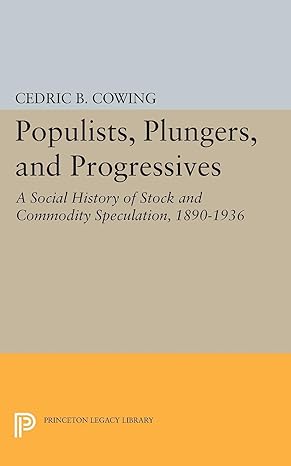Question
The Cost of Capital: Weighted Average Cost of Capital The firm's target capital structure is the mix of debt, preferred stock, and common equity the

The Cost of Capital: Weighted Average Cost of Capital
The firm's target capital structure is the mix of debt, preferred stock, and common equity the firm plans to raise funds for its future projects. The target proportions of debt, preferred stock, and common equity, along with the cost of these components, are used to calculate the firm's weighted average cost of capital (WACC). If the firm will not have to issue new common stock, then the cost of retained earnings is used in the firm's WACC calculation. However, if the firm will have to issue new common stock, the cost of new common stock should be used in the firm's WACC calculation.
Quantitative Problem: Barton Industries expects that its target capital structure for raising funds in the future for its capital budget will consist of 40% debt, 5% preferred stock, and 55% common equity. Note that the firm's marginal tax rate is 40%. Assume that the firm's cost of debt, rd, is 7.3%, the firm's cost of preferred stock, rp, is 6.8% and the firm's cost of equity is 11.3% for old equity, rs, and 12.14% for new equity, re. What is the firm's weighted average cost of capital (WACC1) if it uses retained earnings as its source of common equity? Round your answer to 3 decimal places. Do not round intermediate calculations. %
What is the firms weighted average cost of capital (WACC2) if it has to issue new common stock? Round your answer to 3 decimal places. Do not round intermediate calculations. %
3. 6: The Cost of Capital: Weighted Average Cost of Capital The Cost of Capital: Weighted Average Cost of Capital The firm's target capital structure is the mix of debt, preferred stock, and common equity the firm plans to raise funds for its future projects. The target proportions of debt, preferred stock, and common equity, along with the cost of these components, are used to calculate the firm's weighted average cost of capital (WACC). If the firm will not have to issue new common stock, then the cost of retained earnings is used in the firm's WACC calculation. However, if the firm will have to issue new common stock, the cost of new common stock should be used in the firm's WACC calculation. Quantitative Problem: Barton Industries expects that its target capital structure for raising funds in the future for its capital budget will consist of 40% debt, 5% preferred stock, and 55% common equity. Note that the firm's marginal tax rate is 40%. Assume that the firm's cost of debt, rd, is 7.3%, the firm's cost of preferred stock, lp, is 6.8% and the firm's cost of equity is 11.3% for old equity, rs, and 12.14% for new equity, re. What is the firm's weighted average cost of capital (WACC) if it uses retained earnings as its source of common equity? Round your answer to 3 decimal places. Do not round intermediate calculations. What is the firm's weighted average cost of capital (WACC2) if it has to issue new common stock? Round your answer to 3 decimal places. Do not round intermediate calculations. Grade It Now Save ContinueStep by Step Solution
There are 3 Steps involved in it
Step: 1

Get Instant Access to Expert-Tailored Solutions
See step-by-step solutions with expert insights and AI powered tools for academic success
Step: 2

Step: 3

Ace Your Homework with AI
Get the answers you need in no time with our AI-driven, step-by-step assistance
Get Started


